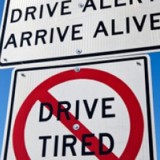MAP-21 Legislation Overview
MAP-21 is the Moving Ahead for Progress in the 21st Century Act which was signed into law by President Obama in July of 2012. The Act was set up to reform funding and authorization for federal surface transportation spending in order to promote growth and development of the country’s roadways and transportation systems. $105 billion was allocated to be spent over the fiscal years 2013 and 2014, with the Act going into effect on October 1, 2012 and expiring on October 1, 2014. Goals of MAP-21 The main goals of MAP-21 are to build needed bridges, roads, and transit systems and to reduce the number of crashes, injuries, and fatalities occurring on roadways. The Act also creates many jobs as a bi-product of these goals. The Act contains many statutes regulating commercial vehicle and driver standards to increase safety on roads throughout the United States. The Act also consolidates highway and transit programs to eliminate outdated or duplicate programs. MAP-21 Legislation MAP-21 implementation is guided by a series of legislation reforms and programs. These programs attempt to address challenges in the current transportation system. The legislation also addresses funding for needed projects and accountability of progress for programs instituted under the act. Highway Improvements MAP-21 seeks to improve the highways of America by strengthening the systems which are currently in place to maintain and upgrade the most important highways. MAP-21 also includes detailed plans to incorporate major roadways which were not previously connected to main thoroughfares. In order to eliminate confusion and streamline processes, the existing highway transportation programs have been revised down to a few core programs. Safety Improvements MAP-21 provides additional support for the existing Highway Safety Improvement Program that is enforced by the Department of Transportation. The funding for infrastructure safety was doubled under MAP-21. The program builds on safety efforts such as the fight against distracted driving. Performance Based Programs The programs implemented under MAP-21 will be reviewed for performance. The information acquired will be used to discern the most efficient use of funds. This type of firm performance management will help to reduce unnecessary spending while maximizing results. MAP-21 Program Funding Funding for MAP-21 is generated without an increase in user fees. MAP-21 outlines how funds will be generated and how they will be distributed. Funds will be generated by implementing certain measures which will save the Department of Transportation money, changing pension plan interest rates, and allowing federal employees to enter into phased retirement. Funds will be distributed to each state based on calculations of the lump sum for each new program divided proportionally. Sources: “H.R.4348 — MAP-21 (Enrolled Bill [Final as Passed Both House and Senate] – ENR).” The Library of Congress. The Library of Congress. Web. 13 Sept. 2014. <http://thomas.loc.gov/cgi-bin/query/z?c112:h.r.4348.enr:> “MAP-21 – Moving Ahead for Progress in the 21st Century Act.” Federal Motor Carrier Safety Administration. U.S. Department of Transportation, 17 Apr. 2014. Web. 12 Sept. 2014. < http://www.fmcsa.dot.gov/mission/policy/map-21-moving-ahead-progress-21st-century-act> “Status of Major FHWA Activities to Implement MAP-21.” U.S. Department of Transportation Federal Highway Administration. U.S. Department of Transportation, 21 Oct. 2013. Web. 12 Sept. 2014....
read moreNew Hours of Service Laws Spark Controversy
A federal trucking regulation that limits a trucker’s hours on the road took full effect in July 2013. This trucking rule, called Hours of Service, was mandated by the U.S. Department of Transportation’s Federal Motor Carrier Safety Administration (FMCSA). The new law is aimed at reducing trucker fatigue and increasing overall safety on the road for truckers and other drivers. However, the regulation is sparking controversy from opponents who argue that truckers, consumers, and small business owners are negatively affected. Hours of Service Rule The main component of the Hours of Service rule states that truck drivers are limited to a 70-hour work week. This figure has been reduced 12 hours from the outdated 82-hour maximum. In turn, it is expected that drivers will be more rested, and therefore road safety from fatigued drivers will improve. The FMCSA notes that the Hours of Service rule will only impact the most extreme schedules. An estimated 85 percent of truck drivers will remain unaffected. Other components of the Hours of Service rule state that: Drivers who reach the 70-hour limit may resume driving under the condition that they receive 34 hours of consecutive rest, including a minimum of two nights when the body’s clock most demands sleep: 1 a.m. to 5 a.m. Drivers must take a 30-minute break within a shift’s first eight-hour period Trucking Law Controversy Critics of the new Hours of Service regulations argue that the trucking industry will suffer a yearly loss of roughly $376 million, which will affect drivers, businesses, and other parties who depend heavily on the industry. The American Trucking Association has filed a lawsuit against the FMCSA in an attempt to halt the regulations. In addition to the limitations on hours, truckers and trucking companies face large fines when the rule is violated. Each time a driver violates the new regulations, he or she may face up to $2,750 in civil fines. The company allowing the driver to do so may face fines of up to $11,000. Trucking Law Projected Benefits The FMCSA asserts that the Hours of Service rule will have a number of benefits for the public. Long hours are often associated with a lack of adequate sleep. In turn, a lack of sleep is associated with chronic fatigue and an increased risk of crashes. Sleep deficit may also cause several chronic health conditions in drivers, including high blood pressure, obesity, sleep apnea, and diabetes. The FMCSA projects that the new regulations will save 19 lives each year. Additionally, an estimated 560 injuries and 1,400 crashes are expected to be...
read more















